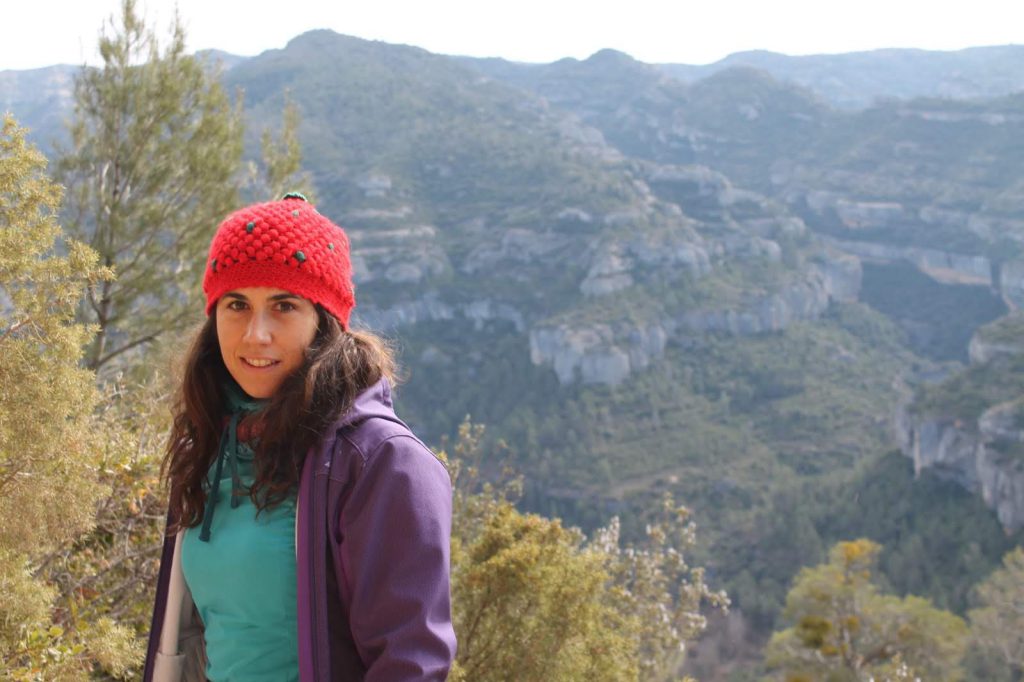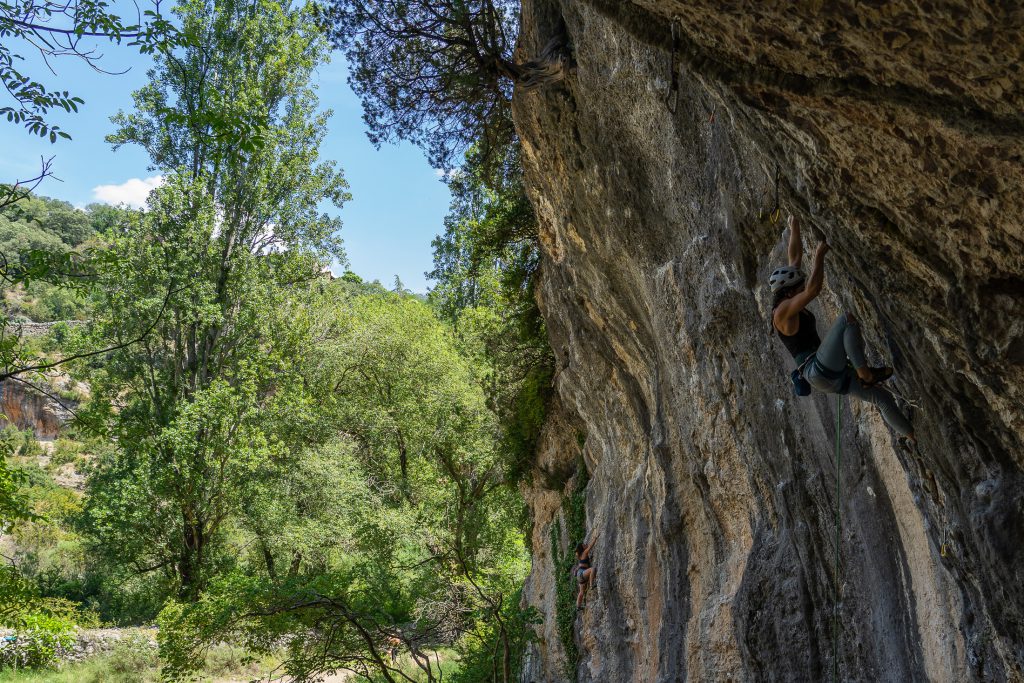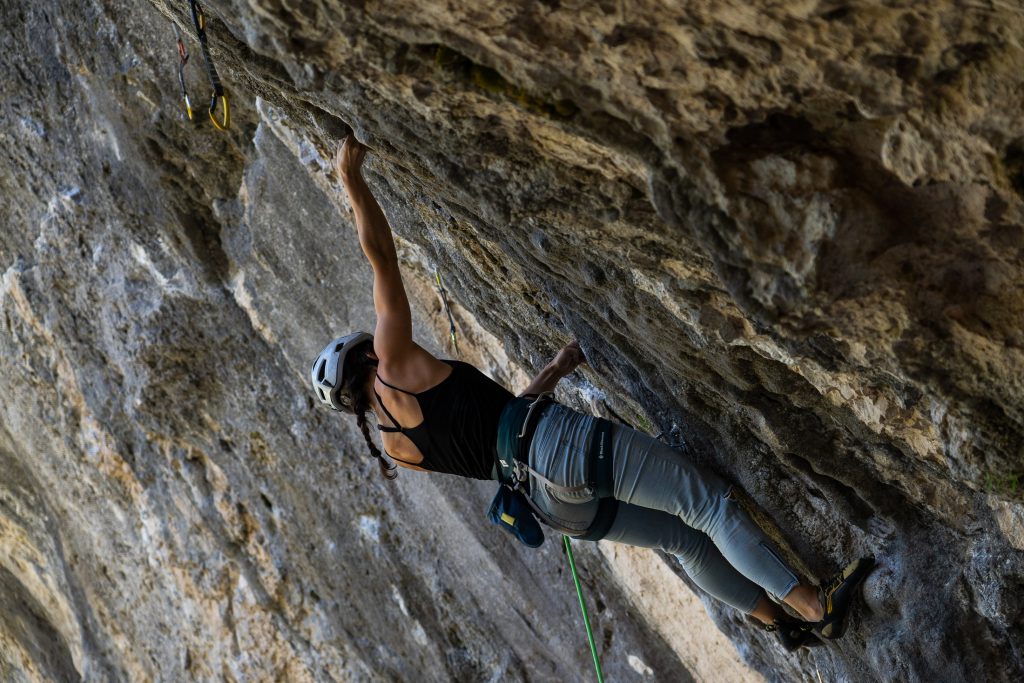Sara Díez Interview: 3 Cycles of a Training Plan With Lattice Training
Sara díez is one of our regular Climbing Training Plan clients who’s now enrolled for 3 consecutive cycles of 12 week plans with us. So far, she’s been having fantastic results and working hard, really consistently. One thing that we see big benefits from, is the longer term training processes that we follow with individuals – those periods where we’re planning for 24, 36 or 52 weeks in a row! As a result, we thought it would be great to understand what Sara’s journey has looked like so far and see what she’s getting out of it. We hope this will inspire you to commit to your own athletic, climbing pathway as a more long term priority.

Firstly, could you tell us a little about what type of climbing you’re into and what your goals are with your training?
Until recently, I only practiced sport climbing. 5 months ago, I started introducing bouldering into my routine and in the last 3 months I’ve only done bouldering.
I was stuck climbing 7a in vertical sport climbs; I could send some 7a+ with effort and I tried 7b’s. I was used to onsight climbing and because of that my short-term goal was to send a 7a onsight and redpoint 7b in one or two sessions; but, above all, I wanted to climb better in overhangs and become more versatile in different styles.
Before your Climbing Training Plan, had you had much experience with training?
Before my first training plan (back in September 2019) I’ve never had a structured training plan for climbing. Since I was little, I practiced different sports (swimming, rhythmic gymnastics, football, fencing, etc..) and I knew the discipline and time that training required. Nonetheless, climbing for me had been more of a hobby than a sport. Three years ago, I sign up to a climbing gym, and once in a while I did some sort of training like pull-ups but not much more and some running (twice a week).

If you’re quite new to the training process, could you tell us a bit about what you found surprising or more rewarding than you expected?
For some time, I wanted to structure my climbing sessions, but I didn’t know where to begin. I tried to follow some of my friends and partner’s advice but some of them didn’t have much experience or their advice didn’t suit my level and I was afraid to get an injury. Something I really enjoy about the tests is the detail that’s involved and based on the results Lattice has been able to highlight my weaknesses and look how to improve them. With the test I’ve been able to know how many weights I’ve been able to work with, and thanks to the training structure I’ve come to know the amount of work I have to dedicate to improve each aspect and how to organize it.
I have also really liked the progressive approach of the training plans with the trimestral system. Based on the second and third training plan, I’ve managed to understand that the first two months were more focused on building a general base which involves several aspects: upper body strength, finger strength, endurance, antagonistic work, flexibility… At the same time, I’ve been able to see that each month it’s structured in 3 weeks on base (in which intensity slowly increases) followed by a deload week. Without realizing it, I’ve been increasing the amount of exercises, the intensity of work and because of that, my grade.
Also, I really like how Lattice has been able to change my training focus plan after plan based on my objectives as they changed from sport climbing to bouldering. I’ve noticed a big improvement during these past months, in which I’ve been training and climbing more than ever and what’s more important, without any injuries!
How has it been managing your life around training? Any tips for our readers?
Ever since I was little, I’ve done several extracurricular activities, and in a way, I’m used to getting off at work and not going straight home. I work in an editorial, sitting down eight hours per day. I am also taking an online course and a few days per week I dedicate them to studying. The three days that I go to the climbing gym, I usually get there between 18:30 – 19:30 and I certainly get back late to my house. It’s something I can allow myself based on the lifestyle, although I’m aware that not everybody can. Nonetheless, if you want to improve you have to dedicate the hours to it. I guess that if I couldn’t get home late because of family responsibilities, I would try to get more exercises I could do at home to get out of bed earlier and train before going to work. I think it’s a viable option.
I asked the Lattice team for a training plan for three days a week, three hours each day. In my opinion, the key is to get into a rhythm, be disciplined and follow through with the exercises in the plan. Being conscious that paying for a training plan isn’t going to make you improve if you don’t follow through, something pretty obvious. In a way, it helped me being a little obsessive because I don’t like getting to the end of the week and see that I didn’t do all the sessions I needed to do.

Most importantly, have you seen any improvements in the training exercises themselves and/or the climbing outside?!
Yes, lots! Last season (2018-2019) I couldn’t climb very much. In the summer of 2018, I had a finger injury; I then had a little operation that resulted in three months without climbing; then an ischium injury and, later, on the cervical because of a bad fall in a climb, from which I had to stop climbing for a few more months. In the summer of 2019, I was climbing between 6a and 6c, and a few 7a because I was losing strength and the fall had affected my psyche while climbing (which it was one of my strengths!). I started last September in a bad shape and I was scared of getting an injury again. In my first two months with the Lattice Lite training I sent my first 7a onsight and my first 7a+ redpoint. Since the third month many things have happened:
I first started changing disciplines, bouldering on Saturdays and sport climbing on Sundays. Secondly, the intensity of training had increased and by the end of the week I was very tired. I was able to easily do moves that were difficult before, but because of the fatigue I couldn’t send. Thirdly, an opportunity came up to make a trip to Rocklands during the summer of 2020 and I decided to leave the rope aside for a while to focus more on bouldering, building strength (my biggest weakness) and make the most out of the trip. Although I was pretty tired by the weekend, I noticed my upper body and finger strength improved and I started to feel more comfortable while climbing in overhanging and roof boulders. In the third plan, which I started this March and I couldn’t complete because of the corona crisis, I’ve changed my objective from sport climbing to bouldering, and is this one: to feel better while climbing 6c roof boulders and send 7a boulders.
If you could have a time machine, what would you say to your former self about why training might be beneficial? Are there any misconceptions?
If I had a time machine, I would tell Past Sara to try climbing sooner, but above all to start a structure training earlier. Since the first time I did a sport climb as a Sunday activity, to signing up to a climbing gym three years ago, a lot of time passed. I sporadically climbed and I remember thinking that my biggest sent was a 6b. As a mountain enthusiast, I didn’t completely understand the culture around climbing gyms or, more specifically, the indoors-only climbers. I now see that climbing in climbing gyms helps you improve much faster, especially if you have a job that allows you to climb outdoors during the week.
It’s true that climbing can be a sporadic activity you do a few times per year and that not everybody climbs with the objective to improve grades (although I still haven’t heard about someone who doesn’t get happy if they do). At the same time, it could be a climbing gym only activity, an equivalent to going to a regular gym. Both are perfectly fine. It’s also true that to improve it requires effort, willpower, and time, and not all people want to incorporate a training into their routine.
In my case, I prioritize climbing in the outdoors and I go to the climbing gym to improve. I must say that I like to train (I do get tired sometimes and I need to make an effort to go to the gym). I’ve started late, I’m not super strong, thin or flexible so I want to improve and just the constant work allows me to improve. There is no better magic wand than consistency.






